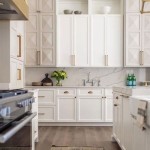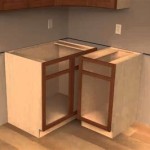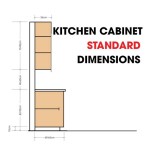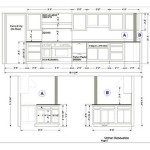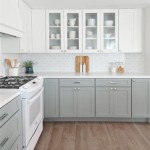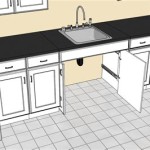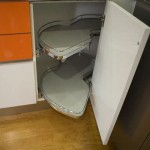Transforming Your Kitchen Cabinets with Wood Contact Paper
If you're looking for a quick and affordable way to refresh your kitchen cabinets, wood contact paper is an excellent solution. It offers a realistic woodgrain look that can instantly elevate the appearance of your kitchen without the cost and mess of a full cabinet refacing or painting project. This article will guide you through the process of using wood contact paper to revamp your kitchen cabinets, highlighting key considerations and steps for successful application.
Choosing the Right Wood Contact Paper
The first step is selecting the ideal wood contact paper for your kitchen. With a wide range of options available, consider the following factors:
-
Woodgrain Pattern:
Choose a pattern that complements the existing style of your kitchen. Popular options include oak, maple, cherry, walnut, and distressed wood. -
Finish:
Consider the finish you desire. Options include matte, gloss, and satin. A matte finish generally offers a more subtle look, while gloss and satin finishes provide a more polished appearance. -
Durability:
Opt for contact paper specifically designed for high-traffic areas. Look for features like water resistance, scratch resistance, and heat resistance, ensuring it can withstand the demands of a kitchen environment. -
Adhesive Strength:
Choose contact paper with a strong adhesive that will hold securely to your cabinet surfaces. However, ensure the adhesive is removable to prevent damage to the underlying surface when you eventually decide to change the paper.
It's also a good idea to purchase a sample roll of the chosen wood contact paper to test it on a small, inconspicuous area of your cabinet before applying it to the entire surface.
Prepping Your Cabinets
Before you start applying the wood contact paper, it's crucial to prepare your cabinets properly. This ensures that the paper adheres well and lasts longer.
-
Clean and Degrease:
Thoroughly clean your cabinets with a mild detergent and water. Remove any grease, dirt, grime, or sticky residue. Let them dry completely before proceeding. -
Sand Smooth:
If your cabinets have rough surfaces, sand them lightly with fine-grit sandpaper. This creates a smooth, even surface for the contact paper to adhere to. -
Remove Hardware:
Take off any cabinet handles, knobs, or hinges. This will prevent them from interfering with the installation process and allow for easier access to all areas. -
Measure and Mark:
Before cutting the contact paper, measure the dimensions of each cabinet door and drawer front. Mark these measurements on the back of the contact paper for accurate cutting.
Proper preparation is key to achieving a professional finish. It's best to dedicate enough time to this step for optimal results.
Applying the Wood Contact Paper
Now comes the actual application of the wood contact paper. This step requires a steady hand and precise movements for a clean and professional finish.
-
Cutting and Peeling:
Using sharp scissors or a utility knife, cut the contact paper to the desired size and shape according to your markings. Carefully peel back a small section of the backing paper, exposing the adhesive side of the contact paper. -
Applying the Contact Paper:
Starting from one edge of the cabinet surface, align the contact paper with the surface and slowly press it down, smoothing it with your hands or a squeegee. Work from the center outwards, pressing out any air bubbles or wrinkles. -
Trimming Excess:
Once the contact paper is completely adhered, carefully trim any excess using a utility knife and a ruler. Use a cutting mat to protect your work surface. -
Smoothing and Finishing:
Use a roller or squeegee to firmly press the contact paper onto the cabinet surface, ensuring it is smooth and free of wrinkles or air bubbles. Apply gentle pressure, avoiding excessive force that may distort the paper.
It's important to work slowly and carefully during this process. If you make a mistake, you can carefully peel back the contact paper and reposition it. Allow the contact paper to dry completely before reattaching the cabinet hardware.
Wood contact paper can offer a quick and budget-friendly solution for transforming your kitchen cabinets. With careful planning and a methodical approach, you can achieve a stunning makeover that enhances the overall look and feel of your kitchen.

How To Update Cabinets Using Contact Paper Al Kitchen Makeover Cover

Spruce Up The Outside Of Your Kitchen Cabinets With Contact Paper Offbeat Home Life

How To Update Cabinets With Contact Paper The Handyman S Daughter

Veelike Wood Contact Paper Brown L And Stick Grain Self Adhesive Texture Vinyl Wrap Waterproof Removable For Furniture Cabinets Table Walls Covering Countertops 15 7 X118 Com

F U Faux Wood Grain Wall Paper Self Adhesive Vinyl Shelf Liner Covering For Kitchen Countertop Cabinets Drawer Furniture Decal 23 4 Wx117 L White Silver Wallpaper

Diy Countertops With Contact Paper

Wood Look Vinyl Self Adhesive Contact Paper

How To Make Over A Kitchen With Contact Paper Covering Cabinets Countertops And Appliances

Brown Wood Contact Paper For Countertops Desk Kitchen Cabinet L And Stick Wallpaper Self Adhesive Vinyl Furniture Removable Waterproof Ca

Livelynine Black Wood Contact Paper Kitchen Countertop Cabinet Vinyl Wrap Waterproof Wall Roll Adhesive L And Stick Covering 16x80 Inch Com
Related Posts

